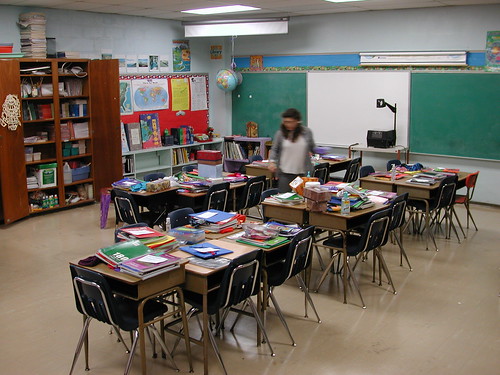By Guest Author Amy Bernert
As someone studying education and planning to pursue a career in teaching, adapting to the changing needs in parent-teacher communication is imperative for success. With today’s emphasis on computer-mediated communication we need to not only to know how to communicate face-to-face, but through the convenient and prevalent method of e-mailing as well.
 In a study that addressed the problems that arise in the e-mail strategies of parent-teacher communication, Thompson conducted 60 interviews with 30 parents and 30 teachers, as well analyzed a total of 188 e-mails (from 27 teachers) and 153 e-mails (from 26 parents).
In a study that addressed the problems that arise in the e-mail strategies of parent-teacher communication, Thompson conducted 60 interviews with 30 parents and 30 teachers, as well analyzed a total of 188 e-mails (from 27 teachers) and 153 e-mails (from 26 parents).
Misinterpretations prevailed as the biggest problem in parent-teacher computer mediated communication. Participants explained that this occurs because there is no inflection involved in e-mails, and some messages often come off as angrier than intended, especially when the parent does not know the teacher well.
The perceived dehumanizing factor of e-mailing also reoccurred as a problem in this study. There are concerns for both the parent and teacher in this case that e-mailing was replacing face-to-face communication.
With the incredible convenience of e-mailing, teachers found the problem that their accessibility to parents was developing too informal of a relationship. Some parents found it appropriate to explain student punishment at home, and teachers found that the relationships forming with parents via e-mail could cause favoritism.
The fourth problem was an educational concern; teachers found that students were relying on their parents to keep track of their schoolwork. Parents also agreed that their children relied on them to e-mail the teachers.
So with the recent and ever-growing spike in computer-mediated communication, the problems listed are sure to occur if both parents and teachers do not use specific strategies to help cut them back. Misinterpretations can be few and far between if you regulate your tone, try to remain positive in e-mails, and use face-to-face communication if you feel a misinterpretation has occurred. Parents and teachers also agreed that getting to know each other better could help reduce confusions, and, of course, this same strategy can be used to hold back the dehumanizing factor of e-mailing to communicate.
Since the last thing a teacher wants to do is tell a parent to stop talking to them so much, the only real way to help with the over-accessibility of teachers through e-mail is for teachers to be aware of their tendency to “play favorites” and make sure it does not occur. It is also important to use e-mailing as a backup, allowing the student to handle issues themselves before involving a parent. This strategy ensures students take responsibility for their actions as well as their schoolwork.
E-mailing has given us all the ability to communicate conveniently through technology, but I would not be surprised if more parent-teacher communication problems arise in years to come. Novice teachers have grown up in a world far more tech-savvy than any other generation and may see computer-mediated technology as a replacement to face-to-face communication, and both parents and teachers need to be aware of the continued need for balance.
Thompson, B. (2009). Parent-Teacher E-mail Strategies at the Elementary and Secondary Levels. Qualitative Research Reports in Communication, 10(1), 17-25
 As any Oprah watcher can tell you, texting while driving is a problem. We can make it illegal (it is in a majority of States), but that doesn’t necessarily eliminate what to many still seems like an innocuous act. A coinciding approach involves looking at the reasons people engage in the behavior, and engaging motivations by starting with intentions. Nemme and White took this approach, a variation of the Theory of Planned Behavior, in their study of 17-24 year-old Australian students.
As any Oprah watcher can tell you, texting while driving is a problem. We can make it illegal (it is in a majority of States), but that doesn’t necessarily eliminate what to many still seems like an innocuous act. A coinciding approach involves looking at the reasons people engage in the behavior, and engaging motivations by starting with intentions. Nemme and White took this approach, a variation of the Theory of Planned Behavior, in their study of 17-24 year-old Australian students.
 In a study that addressed the problems that arise in the e-mail strategies of parent-teacher communication, Thompson conducted 60 interviews with 30 parents and 30 teachers, as well analyzed a total of 188 e-mails (from 27 teachers) and 153 e-mails (from 26 parents).
In a study that addressed the problems that arise in the e-mail strategies of parent-teacher communication, Thompson conducted 60 interviews with 30 parents and 30 teachers, as well analyzed a total of 188 e-mails (from 27 teachers) and 153 e-mails (from 26 parents).